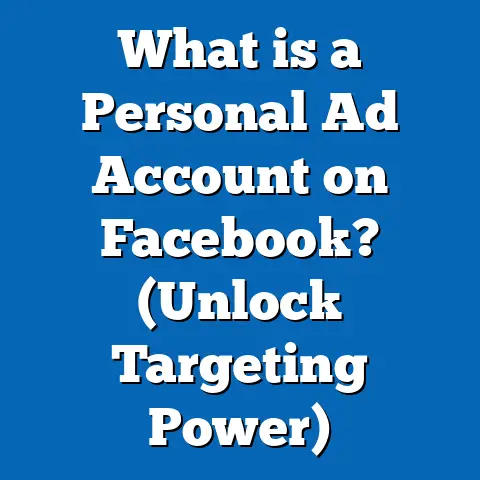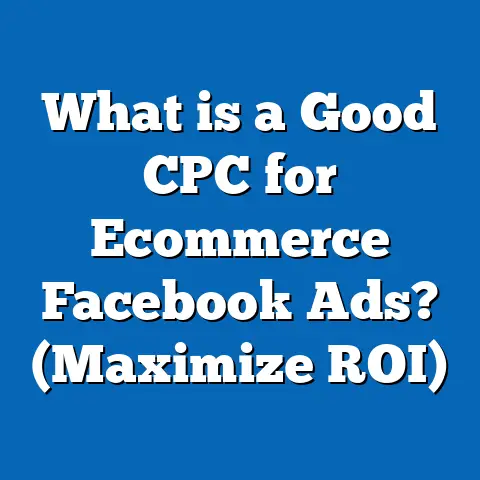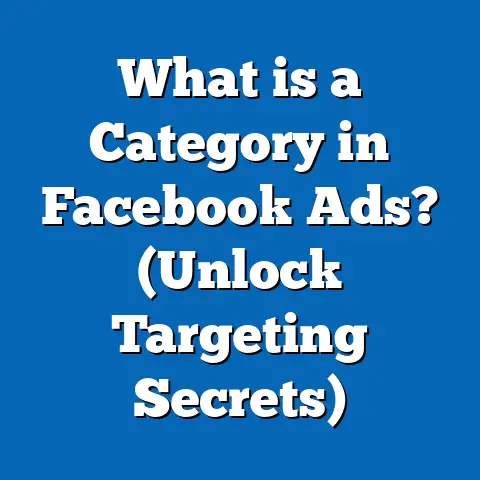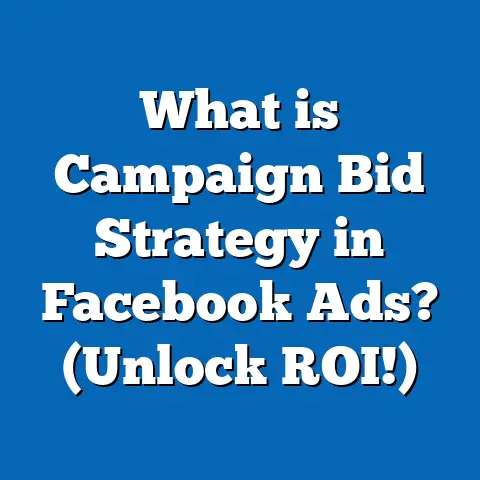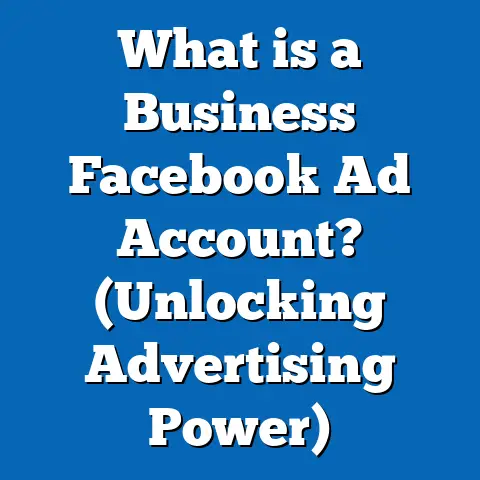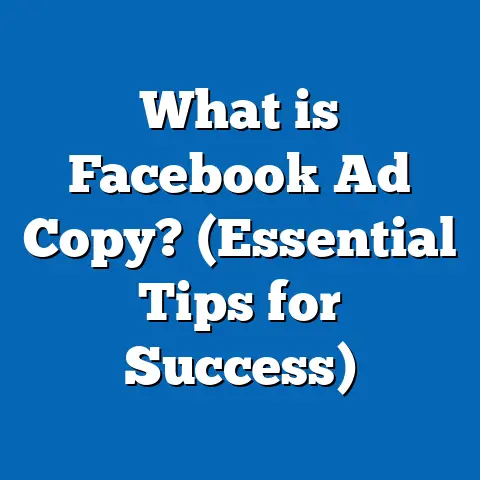What is Facebook Ad View Content? (Unlocking Engagement Secrets)
Introduction: The Cost-Effectiveness of Facebook Ad View Content
In the vast ocean of digital advertising, every dollar counts. For marketing professionals and business owners alike, finding cost-effective ways to reach the right audience is a top priority. Facebook ads have become a cornerstone of many successful advertising strategies thanks to their precision targeting and robust analytics. However, understanding which metrics truly indicate success can be tricky.
One such metric gaining increasing importance is Facebook Ad View Content. This metric tracks not just whether someone clicked your ad, but if they actually viewed the key content you want them to engage with – like a product page, blog article, or landing page.
Why does this matter? Because clicks alone can be misleading. They do not guarantee that a user engaged meaningfully or moved closer to conversion. By focusing on View Content events, advertisers unlock a more accurate signal of engagement and intent. This leads to smarter budget allocation, improved campaign optimization, and ultimately higher return on ad spend (ROAS).
What Is Facebook Ad View Content?
The Definition of View Content Event
Facebook Ad View Content is an event tracked by the Facebook Pixel or the Facebook SDK that records when a user visits a specific page or views specific content on your website or app after interacting with your ad.
Unlike simple click tracking, which shows how many users clicked your ad link, the View Content event indicates that users actually landed on and viewed the targeted content. This event is crucial because it provides a deeper level of insight beyond surface-level interactions.
For example, if an e-commerce ad drives traffic to a product page, the View Content event confirms the user saw that product page. If you’re running a lead generation campaign driving users to a signup form or resource download page, View Content confirms users reached that step.
Why Facebook Uses This Metric
Facebook’s advertising algorithm uses View Content data to optimize ad delivery toward users most likely to engage meaningfully with your ads. When you optimize for View Content:
- Facebook learns which audiences are more likely to view your content.
- This helps reduce wasted spend on clicks that don’t result in meaningful engagement.
- It improves overall campaign efficiency and conversion potential.
Distinguishing View Content from Other Events
Facebook tracks many standard events such as:
- PageView: Any page visit on your site.
- ViewContent: Viewing specific pages or content you define.
- AddToCart: Adding products to cart.
- InitiateCheckout: Beginning checkout process.
- Purchase: Completing the transaction.
Among these, View Content represents a critical middle step—users have moved beyond mere browsing but haven’t necessarily converted yet.
The Importance of Facebook Ad View Content for Cost-Effective Advertising
Why Clicks Alone Are Not Enough
Clicks have traditionally been used as a primary success metric in digital ads. However:
- Not all clicks lead to meaningful engagement.
- Some clicks are accidental or from users not genuinely interested.
- Clicks do not measure whether users saw or interacted with your intended content.
Data from Wordstream shows that average click-through rates (CTR) for Facebook ads hover around 0.90%, but conversion rates vary widely depending on targeting and ad quality. Thus, clicks alone do not tell the full story.
View Content Adds Depth to Engagement Measurement
By tracking View Content events:
- You understand how many users actually viewed key content pages after clicking.
- This metric filters out low-quality clicks.
- It helps identify bottlenecks in user journey (e.g., landing pages with high bounce rates).
Cost Per View Content (CPVC) as a More Insightful KPI
CPVC measures how much you pay on average per user who views your content. This cost is often lower than paying per conversion but more meaningful than paying per click.
According to recent benchmarks:
| Industry | Average CPVC (USD) |
|---|---|
| E-commerce | $0.70 – $2.50 |
| Lead Generation | $1.20 – $3.00 |
| B2B Services | $1.50 – $3.50 |
Optimizing campaigns for CPVC rather than CPC (cost per click) often results in better funnel performance and higher ROI.
How Facebook Tracks View Content: Pixel & SDK Explained in Detail
Understanding the Facebook Pixel
The Facebook Pixel is a JavaScript snippet placed in your website’s header code. It tracks user behavior by sending data back to Facebook servers when users interact with your site.
Key Features
- Tracks page views and specific events like View Content.
- Enables custom conversions based on URL rules or parameters.
- Sends data for campaign optimization and audience building.
How to Implement View Content Tracking via Pixel
You can track View Content in two main ways:
- Standard Event Code
Insert this snippet on your product or key content pages:
fbq('track', 'ViewContent');
- URL-Based Tracking
Configure custom conversions in Business Manager that fire when users visit URLs containing specific strings (e.g.,/product/123).
Mobile App Tracking: Facebook SDK
For mobile apps, Facebook’s Software Development Kit (SDK) tracks in-app events including content views:
- SDK sends events when users open specific app screens.
- Enables cross-device tracking and attribution.
Setting Up Facebook Ad View Content Tracking: Step-by-Step Guide
Step 1: Install Facebook Pixel on Your Website
- Access your Business Manager > Events Manager.
- Create or use existing Pixel.
- Copy Pixel base code.
- Paste into header of every webpage.
Step 2: Add View Content Event Code
On product pages or content pages you want to track:
fbq('track', 'ViewContent', {
content_name: 'Example Product',
content_category: 'Shoes',
value: 29.99,
currency: 'USD'
});
Providing parameters like content_name helps with granular reporting.
Step 3: Verify Pixel & Events
Use the Facebook Pixel Helper Chrome extension to ensure the pixel fires correctly when visiting tracked pages.
Step 4: Create Custom Conversions (Optional)
In Events Manager:
- Define rules for URL contains or parameters.
- Name your conversion (e.g., “Product Page View”).
- Use this conversion in campaign optimization.
Practical Applications of Facebook Ad View Content for Marketers
Optimizing Campaigns Beyond Clicks
By optimizing for View Content events:
- You tell Facebook to show ads to users likely to view important content.
- This narrows the audience from general clickers to engaged visitors.
- Results in higher quality traffic with better conversion potential.
Using View Content Data for Retargeting
Retargeting users who have viewed content is a proven strategy:
- Target users who viewed product pages but did not purchase.
- Show dynamic ads featuring products they viewed.
- Deliver personalized offers or discounts.
Example: Dynamic Retargeting Campaign
An online fashion retailer used View Content audiences for dynamic retargeting ads showcasing browsed products plus related items. Over 6 months:
- ROAS increased 3x compared to prospecting campaigns.
- Cart abandonment reduced by 15%.
- Customer lifetime value improved due to repeat purchases.
Case Studies Demonstrating the Power of Facebook Ad View Content
Case Study 1: SaaS Company Boosts Lead Quality
A SaaS company wanted better quality leads rather than just sign-ups. They shifted campaign optimization from clicks to View Content of their pricing page.
Results:
- Cost per lead dropped by 25%.
- Lead-to-customer conversion rates improved by 18%.
- Sales team reported higher lead qualification.
Case Study 2: E-commerce Brand Reduces Wasted Spend
An e-commerce brand noticed many clicks but low purchase conversion. They implemented pixel tracking for View Content and optimized campaigns based on this metric.
Results:
- CPVC decreased by 40%.
- Purchase conversion improved by 22%.
- Monthly revenue increased by $50K within three months.
Comparing Facebook Ad View Content with Similar Metrics on Other Platforms
Google Ads Engagement Metrics
Google Ads tracks:
- Clicks
- Session duration
- Bounce rate (via Google Analytics)
But it lacks direct event-based optimization like Facebook’s pixel-enabled View Content metric for ongoing ad delivery optimization.
TikTok Ads and Snapchat Ads
Both platforms offer engagement metrics such as video views or swipe-ups but lack granular pixel-based website event tracking comparable to Facebook’s system.
Facebook’s ecosystem remains superior for advertisers needing detailed funnel tracking and retargeting capabilities.
Advanced Strategies for Maximizing Facebook Ad View Content Value
Creating Custom Parameters for Granular Insights
Enhance pixel events by passing custom parameters like product IDs, categories, or prices. This allows:
- More precise segmentation.
- Tailored retargeting campaigns.
- Better reporting dashboards.
Example:
fbq('track', 'ViewContent', {
content_ids: ['12345'],
content_type: 'product',
value: 49.99,
currency: 'USD'
});
Combining View Content with Other Events for Funnel Analysis
Track multiple events in sequence:
- ViewContent: User sees product page.
- AddToCart: User adds product.
- InitiateCheckout: User starts checkout.
- Purchase: User completes purchase.
Analyze drop-off points between these stages and optimize accordingly.
Using Lookalike Audiences Based on High-Value View Content Events
Create lookalike audiences from users triggering high-value View Content events (e.g., premium product pages) to find new potential customers with similar behaviors.
Navigating Privacy Changes Impacting Facebook Ad Tracking
The Effect of iOS 14+ Updates on Pixel Tracking
Apple’s privacy changes restrict app tracking transparency (ATT), limiting data available from iOS users.
This affects:
- Accuracy of pixel event reporting.
- Audience size for retargeting based on pixel events like View Content.
How Facebook Mitigates These Issues
Facebook introduced Aggregated Event Measurement (AEM):
- Limits tracked events per domain to eight prioritized events.
- Requires advertisers to prioritize key events like ViewContent or Purchase for attribution.
Advertisers should verify event priority settings in Events Manager and consider broader attribution windows post-iOS updates.
Troubleshooting Common Issues with Facebook Ad View Content Tracking
Pixel Not Firing on Specific Pages
Possible causes:
- Missing pixel code on those pages.
- JavaScript errors blocking execution.
- URL parameters causing mismatch with custom conversion rules.
Solution:
- Use Pixel Helper tool to diagnose.
- Test pixel firing under different scenarios.
Data Discrepancies Between Facebook and Google Analytics
Reasons include:
- Different attribution models (last click vs. multi-touch).
- Time zone setting differences.
- Filtering of bot traffic or internal IPs in Google Analytics.
Understanding these differences prevents misinterpretation of data.
Practical Examples of Campaign Structures Leveraging View Content
Example 1: E-commerce Funnel Campaign Structure
- Awareness Campaign: Optimize for impressions or link clicks to broad audience.
- Consideration Campaign: Optimize for View Content event targeting those who viewed product pages.
- Conversion Campaign: Optimize for Purchase event targeting retargeted audiences who added products to cart.
This layered approach ensures efficient budget allocation at each funnel stage.
Example 2: Lead Generation Campaign Setup
- Drive traffic with ads optimized for landing page views (ViewContent).
- Retarget users who visited landing page but did not submit lead form.
- Use custom conversions to track completed form submissions as conversions.
Future Trends in Facebook Advertising Related to Ad Engagement Metrics
Increasing Use of AI & Machine Learning
Facebook continuously improves its AI algorithms to predict which users will trigger engagement events like ViewContent — making automated campaign optimization smarter and more effective.
Integration with AR/VR Experiences
As augmented reality ads grow, tracking content views within immersive experiences will open new engagement metrics beyond traditional web page views.
Cross-Platform Attribution Improvements
Facebook aims to improve multi-device attribution linking web and app engagement with offline sales using enhanced data matching techniques—benefiting advertisers relying on ViewContent as a core metric.
Summary & Next Steps: Unlock Engagement Secrets with Facebook Ad View Content
Recap of Key Points
- Facebook Ad View Content measures meaningful engagement by tracking when users view specific web/app content after interacting with ads.
- Optimizing campaigns around this event increases efficiency and reduces wasted spend.
- Proper pixel implementation and verification are critical for reliable data.
- Retargeting audiences based on this event boosts conversion rates significantly.
- Privacy changes require prioritizing key events and adopting aggregated measurement techniques.
- Combining view content data with other funnel events provides holistic insights into user behavior.
Actionable Next Steps for Marketers & Business Owners
- Audit current pixel setup focusing on capturing accurate ViewContent events on key pages.
- Shift campaign objectives from clicks to view content optimization where possible.
- Build retargeting audiences of engaged users who viewed valuable content.
- Leverage lookalike audiences derived from these engaged segments.
- Monitor CPVC alongside other KPIs and adjust bids/frequency accordingly.
- Stay updated on platform changes — especially privacy regulations affecting tracking accuracy.
- Experiment with combined use of custom conversions and funnel-based campaigns for maximum impact.
Mastering Facebook Ad View Content equips advertisers with one of the most powerful tools for driving efficient growth in today’s competitive digital landscape.

